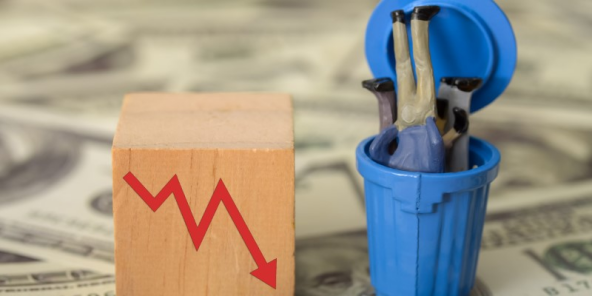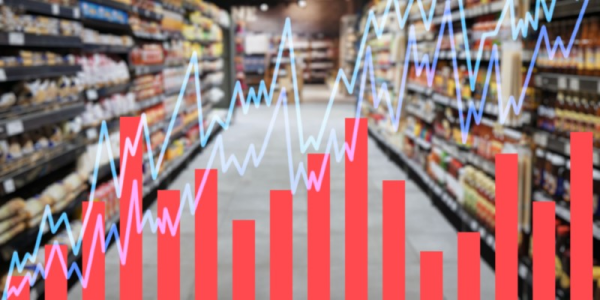Economic instability can create uncertainty for investors, leaving many wondering where to spend money. However, some sectors, including utility and consumer staples stocks, are historically more resilient during tough times. These stocks provide essential services and products, making them valuable during periods of volatility. This article will examine how economic instability impacts investments, why utility and consumer staples stocks perform well during downturns, and which sectors to monitor for long-term stability.
Economic instability refers to periods of volatility marked by inflation, recessions, rising interest rates, or geopolitical crises. These events create uncertainty in financial markets, often leading to sharp declines in stock prices and investor confidence. During such times, people and businesses typically reduce their spending, which impacts companies' revenue and profitability.
Economic instability means heightened risk for investors. Traditional investment strategies that work during stable economic periods may no longer apply. High-growth stocks and speculative investments often suffer as market sentiment becomes risk-averse. Safe-haven assets like government bonds and gold may increase in value, but equity investors need options that provide steady returns, even during economic downturns.

Utility and consumer staples stocks often outperform during downturns due to their essential goods and services. They provide stability and predictable returns as demand remains steady despite economic conditions.
Utility and consumer staples stocks perform well during economic instability because they provide essential goods and services. Utilities like water, electricity, and gas maintain stable demand, ensuring consistent revenue. Similarly, consumer staples, including food, beverages, and household goods, are necessary purchases regardless of the economy. This steady demand makes these sectors more resilient during economic downturns.

Utility and consumer staples stocks are resilient due to their defensive nature. They offer stable returns and lower volatility during bear markets or recessions. Investors are attracted to these stocks because of their consistent dividend payments, which provide a stable source of income in uncertain market conditions. These stocks protect against market downturns compared to cyclical stocks that fluctuate with the broader economy.
Utility and consumer staples sectors are also less sensitive to economic cycles. While industries such as technology or consumer discretionary may experience sharp booms and busts depending on economic conditions, utilities and staples have more predictable earnings. Their business models are often regulated (in the case of utilities), and consumer demand remains relatively constant, making them a safer bet during uncertain times.

The utility and consumer staples sectors, known for stability and defensive qualities, attract investors during economic uncertainty. They offer safe havens and reliable returns in volatile market conditions.
The utilities sector includes essential services like electricity, natural gas, and water. Electricity providers benefit from long-term contracts, while water utilities have stable demand regardless of economic conditions. Renewable energy is a growing subsector driven by global investments in clean energy, offering long-term stability despite policy sensitivities.
The consumer staples sector includes essential industries like food, beverages, household products, and personal care. These necessities maintain strong demand during economic downturns, making grocery stores, packaged food producers, and hygiene product manufacturers attractive investments. Strong brand loyalty helps these companies retain market share even during recessions.

During economic instability, long-term investment strategies prioritize diversification and risk management, focusing on resilient assets and stable industries to preserve wealth and achieve sustainable growth despite market fluctuations.
Diversification is critical when building a long-term investment strategy to navigate economic instability. Allocating a portion of your portfolio to defensive sectors like utilities and consumer staples can provide a buffer during market volatility. However, it's important to diversify within these sectors as well. For example, investing in a mix of traditional utilities, renewable energy companies, food producers, and personal care product manufacturers can help spread risk.
Diversifying across different geographical markets is another way to protect against economic instability. While one region may be experiencing a recession, another part of the world may still be growing. Utility and consumer staples companies with international operations can offer added stability by tapping into different markets.
Another effective strategy is to focus on dividend-paying stocks within the utility and consumer staples sectors. Dividends can provide a reliable income stream during economic uncertainty, helping offset potential losses from falling stock prices. Utility companies are mainly known for paying regular dividends, making them attractive to income-focused investors.
Consumer staples companies also tend to have strong cash flows, enabling them to pay consistent dividends. When selecting dividend-paying stocks, it is essential to look for companies with a history of increasing their dividends over time. This indicates financial health and a commitment to returning value to shareholders.
Finally, investors should consider the long-term growth potential of essential services. While utility and consumer staples stocks may not offer the rapid growth potential of more cyclical industries, they can provide steady returns over time. As populations grow and the demand for essential services like energy, water, and food increases, companies in these sectors are likely to see consistent revenue growth.
For long-term investors, utility and consumer staples stocks offer a way to weather economic downturns while benefiting from the steady demand for essential products and services. This makes them valuable to any diversified portfolio, especially during financial instability.

Finding safe investment opportunities becomes more critical than ever during economic instability. Utility and consumer staples stocks offer a reliable option due to their essential nature and defensive characteristics. These sectors provide stability through consistent demand, even when other parts of the economy struggle. By focusing on essential services, dividend-paying stocks, and long-term growth potential, investors can position themselves to weather economic uncertainty while generating returns.
Utility and consumer staples stocks, while not immune to all market risks, remain a crucial part of a well-diversified portfolio. During periods of volatility, their stability and resilience make them stand out, offering short-term security and long-term growth potential.